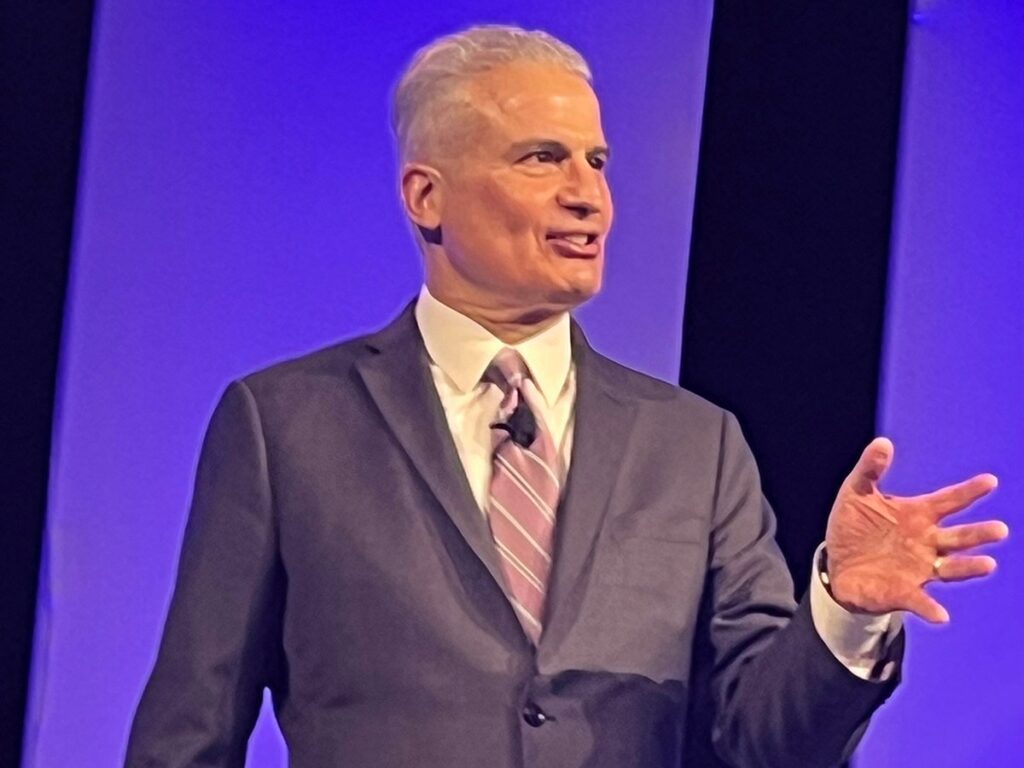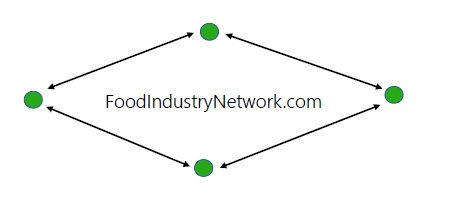Tariffs called part of long game with trade negotiations

Glacier FarmMedia—As the clock continues to tick to midnight April 2 on U.S. president Donald Trump’s month-long exemption on blanket tariffs to Canada that has left many ag industries at a standstill, one U.S. insider gave his thoughts at the 2025 Alberta Beef Industry Conference in Calgary on what he believes is the end game for the trade war.
Under multiple American administrations, John Sitilides has served as southern Europe regional co-ordinator at the U.S. State Department’s Foreign Service Institute. For 17 years he has been training American diplomats and foreign policy professionals.
Read Also

Reports showcase Canada’s environmental edge in cereal production
Reports from Cereals Canada highlight the relatively small environmental footprint of Canadian non-durum wheat, durum wheat, barley, and oats, when compared to top producing countries.
Sitilides, who is the principal at Trilogy Advisors in Washington, D.C., specializes in U.S. government relations, geopolitical risk and international affairs.
The graduate of Columbia University who holds a master’s degree in international and public affairs first met Donald Trump in 1986 when he first launched his career in New York, and has followed him in the decades since, especially over the last 10 years over his two presidencies.
“I don’t pretend to know how the man thinks. I don’t read anyone’s mind, but we try to divine where he’s going and how he’s thinking by his statements, by his actions and by the patterns that we see in these last 46, 47 days, and, of course, by his first term” said Sitilides in some of his opening statements to his presentation, Trump & the World: The New Geopolitics of Trade, Energy, Diplomacy, and War.
“He does very much view the world and America’s relations with countries around the world from a very sort of narrowly cast dynamic of trade imbalances. He sees here that the U.S. continues to suffer massive trade deficits with so many economies around the world.”
Trade deficits—by the numbers
The trade deficits, using 2024 numbers, include China ($270.4 billion), Mexico ($157.2 billion) and Canada ($54.6 billion), as well as members of the European Union — Ireland ($80.5 billion) and Germany ($76.4 billion).
Canada is in Trump’s crosshairs despite being ninth on the list of U.S. trade deficits and the second smallest of America’s major trading partners after France.
The U.S. trade deficit with Canada is one-fifth the size as the deficit with Mexico and one-eighth the size with China. For manufacturing, the U.S. is a net exporter of goods to Canada.
“Those are, of course, the four main states of Trump’s so-called tariff strategy. To the degree that there is a singular strategy, there may be different ones for North America, for the EU and for China, and those will play out at different stages over the next several months,” said Sitilides.
“Trump has, in his mind, far greater leverage in trade negotiations with Canada and with Mexico, at least for the time being, than the EU or with China, given the inordinate independence of Canada’s and Mexico’s economies on trade with the United States.”
Trade deficits more than doubled
The trade deficit between the U.S. and Canada/Mexico has more than doubled from what it was when Trump began his first term as president in 2017.
The U.S. commerce department released trade figures in early 2024 that showed $220 billion in trade deficits with Canada and Mexico combined, up from $85 billion in 2017, the year Trump took office and forced the two countries into a renegotiation of the decades-old North American Free Trade Agreement.
In October 2018, when negotiations were completed to replace NAFTA with the Canada-U.S.-Mexico Agreement (CUSMA), Trump said, “I have long contended that NAFTA was perhaps the worst trade deal ever,” and “we have negotiated this new agreement based on the principle of fairness and reciprocity.”
Added Sitilides: “What’s interesting is that Donald Trump is a man and a leader who almost never admits a mistake, even if there is one, and this seems to me to be one inherent in the trade strategy, the tariff strategy with Canada and Mexico. He was extraordinarily proud in his first administration of replacing what he considered to be the failed NAFTA agreement (1994), with the so called (CUSMA).…
“What was supposed to be a corrective agreement under the Trump administration in 2018-19 led to a greater trade deficit on the part of the U.S., with both Mexico and Canada. Trump clearly feels that something has gone off the rails, and he needs to correct this. A large part of what is happening with Canada and Mexico, on a strategic level, is the beginning of the renegotiation of the (CUSMA), far in advance of the schedule 2026 negotiation.”
Trump looking for corrective mechanisms
The United States is Canada’s largest agricultural trading partner, buying 60.3 per cent of Canadian exports and supplying the 56.8 per cent of Canadian imports.
The three top countries targeted to date — Mexico ($30.3 billion), Canada ($28.3 billion) and China ($24.7 billion) — were the U.S.’s top three markets for agriculture exports in 2024, respectively, according to the American Farm Bureau Federation.
Canada imposed a retaliatory tariff in early March that affected $5.8 billion of U.S. agricultural products, according to Canadian trade statistics for 2024.
“I think there are some specific areas of the U.S.-Canada trade relationship. One that comes up frequently in Washington is the very significant tariffs that the Canadian government has placed on the U.S. agriculture sector for a number of years. Some of these tariffs involve triple digits,” said Sitilides.
“President Trump will look to see where there’s a corrective mechanism, whether it’s the trolling of (former prime minister) Trudeau right now or whether it’s a more serious negotiation that will play out over the next year to year and a half. We certainly have a dynamic of tremendous uncertainty regarding trade, but I would say that uncertainty is the deliberate strategy of Donald Trump in almost every aspect of America’s relations with our best friends, countries like Canada, allies and certainly with our adversaries, to keep everyone on their heels.”
Source: Farmtario.com


